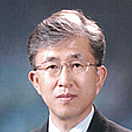Practical Computer-Generated Hologram for 3D Display
A special issue of Applied Sciences (ISSN 2076-3417). This special issue belongs to the section "Optics and Lasers".
Deadline for manuscript submissions: closed (31 December 2020) | Viewed by 37061
Special Issue Editors
Interests: computer-generated hologram; holographic printer; holographic video display; 3D display
Special Issues, Collections and Topics in MDPI journals
Interests: 3D display; diffractive optics; holography
Special Issues, Collections and Topics in MDPI journals
Interests: 5G mm-wave antennas; MIMO antennas; mobile phone antennas; health effects of electromagnetic fields; EMF safety standards; wireless power transfer
Special Issues, Collections and Topics in MDPI journals
Special Issue Information
Dear Colleagues,
It has become easy to calculate computer-generated holograms that have over billions of pixels, because the performance of computers has improved year by year. This has made it more practical to use computer-generated holograms for 3D display. There is also much research—not only calculations, but also output devices for holographic video displays and holographic printers. This Special Issue covers advanced and practical research works on computer-generated holograms, ranging from calculation algorithms, hardware accelerations, video displays, printers, compressions, photo realistic image synthesizing, colorizing, and quality assecments. We invite researchers and investigators to contribute their original research or review articles to this Special Issue.
Prof. Dr. Hiroshi Yoshikawa
Prof. Nam Kim
Prof. Juan Liu
Guest Editors
Manuscript Submission Information
Manuscripts should be submitted online at www.mdpi.com by registering and logging in to this website. Once you are registered, click here to go to the submission form. Manuscripts can be submitted until the deadline. All submissions that pass pre-check are peer-reviewed. Accepted papers will be published continuously in the journal (as soon as accepted) and will be listed together on the special issue website. Research articles, review articles as well as short communications are invited. For planned papers, a title and short abstract (about 100 words) can be sent to the Editorial Office for announcement on this website.
Submitted manuscripts should not have been published previously, nor be under consideration for publication elsewhere (except conference proceedings papers). All manuscripts are thoroughly refereed through a single-blind peer-review process. A guide for authors and other relevant information for submission of manuscripts is available on the Instructions for Authors page. Applied Sciences is an international peer-reviewed open access semimonthly journal published by MDPI.
Please visit the Instructions for Authors page before submitting a manuscript. The Article Processing Charge (APC) for publication in this open access journal is 2400 CHF (Swiss Francs). Submitted papers should be well formatted and use good English. Authors may use MDPI's English editing service prior to publication or during author revisions.
Keywords
- Large-scale computer-generated holograms;
- Color computer-generated holograms;
- Computer-generated holograms from real objects;
- Compression of computer-generated holograms;
- Fast calculation algorithms and hardware accelerations for computer-generated holograms;
- Novel and advanced applications of computer-generated holograms;
- Holographic video display;
- Holographic printers;
- Computer-generated holographic stereograms;
- Advanced holographic stereograms.







